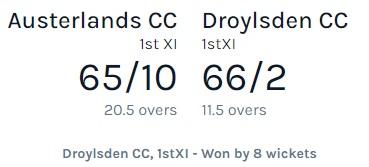Mobile
Tablet
WELCOME TO GMCL FOR YOUR MOBILE
Cookie Privacy Preferences
We utilize essential cookies to ensure our website operates effectively and remains secure. Additionally, we'd like to request your permission to use optional cookies. These are intended to enhance your browsing experience by offering personalized content, displaying advertisements that are relevant to you, and helping us to further refine our website.
Choose "Accept all cookies" to agree to the use of both essential and optional cookies. Alternatively, select "Let me see" to customize your preferences.
Privacy Preference Centre
Our website utilizes cookies to enhance your browsing experience and to present you with content tailored to your preferences on this device and browser. Below, you will find detailed information about the function of cookies, enabling you to make informed choices about which cookies you wish to accept. Please note that disabling certain cookies might impact your user experience on our site. It's important to remember that cookie preferences need to be set individually for each device and browser you use. Clearing your browser's cache may also remove your cookie settings. You have the freedom to modify your cookie preferences at any point in the future.
For a comprehensive understanding of our use of cookies, please refer to our complete cookies policy.
These cookies are needed for the website to work and for us to fulfil our contractual obligations. This means they can't be switched off. They enable essential functionality such as security, accessibility and live chat support. They also help us to detect and prevent fraud. You can set your browser to block or alert you about these cookies, but it means some parts of the site won't work.
These cookies allow us to measure and improve the performance of our site. They help us to know how popular pages are, and to see how visitors move around the site. If you don't allow these cookies, we won't know when you've visited our site, and we won't be able to monitor its performance.
These cookies enable us to provide enhanced functionality and personalisation. They may be set by us or by third party providers whose services we've added to our pages. If you don't allow these cookies, some or all of these services may not work properly.
These cookies collect information about your browsing habits to show you personalised adverts. They may be used to build a profile of your interests and show you relevant adverts on other sites. They don't store directly personal information, but are based on uniquely identifying your browser and internet device. If you don't allow these cookies, the adverts you see will be less relevant.
Mobile
Tablet
WELCOME TO GMCL FOR YOUR MOBILE
Net Run Rate (NRR) is used in GMCL to differentiate equal points positions in League Tables.
So what is NRR?
The basic principle is
Runs scored divided by overs
minus
Opposition runs scored divided by overs
HOWEVER nothing is ever simple, there are key exceptions to that calculation.
What are the exemptions?
If a game is abandoned without a result the NRR scores / overs calculations are not included for either side, an example is -

NRR calculation for the game - Golborne 0/0 - Swinton Moorside 0/0
Insufficient overs were bowled in the 2nd innings to give a result.
Where a first innings is restricted for weather during the innings then the runs for NRR is the Revised Target for innings 2 (-1) and the overs is the full allocation, an example is -

NRR calculation for the game - Hadfield St Andrews 341/50 - Dukinfield 171/30
- This game ended at 30 overs of innings 2 due to weather and because this is over 20 overs then DLS comes into play and there is a result so NRR is calculated as above.
- Had Dukinfield been able to face their full 46 overs their NRR would be their score/46
Where a first innings is not restricted for weather during the innings and the team batting first is all out, then the NRR calculation for the 1st innings is the runs scored/overs available, an example is -

NRR calculation for the game - Austerlands 65/50 - Droylsden 66/11.83 (11.83=11.5 overs)
- Austerlands batting first had 50 overs at their disposal so this is used in the calculation.
- Droylsden could not bat for 50 overs as the game ended at 11.5
If this game had been reduced to 38 overs before the start then the NRR numbers would be-
Austerlands 65/38 - Droylsden 66/11.83
Where a first innings is not restricted for weather during the innings and the team batting second is all out, then the NRR calculation for the 2nd innings is the runs scored/overs available, an example is -

NRR calculation for the game - Worsley 268/50 - Glodwick 69/38
- The first innings was reduced to 46 overs during the innings so the revised target is used. In this case the Revised target was the same - 268 and 50 overs used as in example 2 above.
- The second innings was reduced to 38 just after the start of the second innings so this has no impact on the 1st innings NRR. Although Glodwick only faced 28.3, they were all out so, could have faced 38, so 38 is used.
NRR is only maintained as a cumulative total, with the calculations done automatically in the system.
